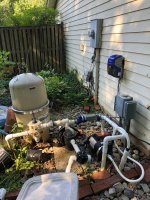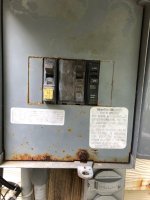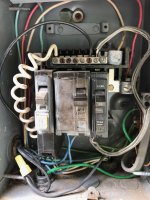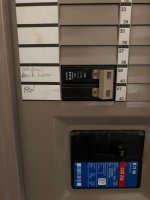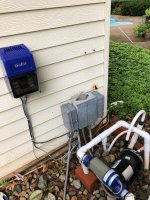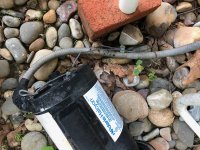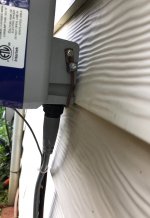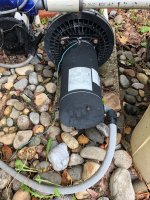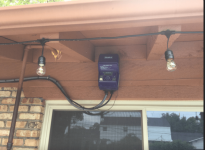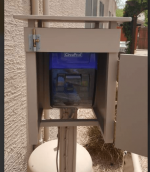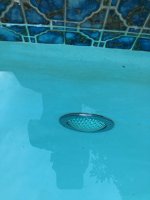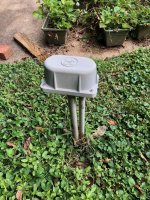- May 30, 2018
- 38
- Pool Size
- 28500
- Surface
- Plaster
- Chlorine
- Salt Water Generator
- SWG Type
- CircuPool RJ-60 Plus
Hello. I'm getting ready to replace my single-speed pump with the CircuPool SmartFlo 3.0 VS pump. As part of that, I'm also hiring an electrician to upgrade the breaker in the main panel that powers the pool subpanel from 20A to 40A. When I bought this house, it came with only the single-speed pump and the Polaris booster pump, and 20A seemed to be fine for that. But when I added the CircuPool RJ60+ SWCG, the breaker started tripping when all 3 were on at the same time, hence the need to upgrade.
I found an electrician that has experience with pool equipment, and he added this note about bonding the new pump:
"Connect new filter pump motor to common bond wire. It's recommended that the pool water connects to common bond wire. Water bond generally installs in filter basket. Customer to provide and install water bond in filter basket and we will connect #8 common bond wire to ground pool water."
This is what the CircuPool manual says:
"Bond the motor to all metal parts of the pool structure and to all electrical equipment, metal conduit and metal pipping within 5 feet (1.5 M) of the inside walls of the swimming pool, spa or hot tub in accordance with the current National Electrical Code. UL requires use of a solid copper bonding conductor not smaller than 8 AWG. See Figure 3. The bonding lug should be used to bond the motor frame to the equipment pad."
What is the appropriate thing to do here? I've attached a picture of my setup for reference.
I also have a couple more questions about the circuitry that I would appreciate your thoughts on:
1. The electrician is proposing upgrading to a 40 amp Cutler Hammer double pole GFI circuit breaker in the main panel. Does it have to be GFI? Based on a quick search at Lowe's, it looks like GFI breakers are a lot more expensive so I'm wondering if the added cost is justified.
2. Another thing I noticed is that the Polaris booster pump is running on 120V. The manual says it is factory wired for 240V. Can anyone think of a reason why the previous owners switched it to 120? Would it make sense to make it 240V now that I'm updating the panel? One thing that might affect the answer is that I'm thinking of replacing the two separate mechanical Intermatic timers with a single digital one that can control both the SWCG and the Polaris pump independently. Is there a digital timer that can control both if both are running on 240V?
Thanks!
I found an electrician that has experience with pool equipment, and he added this note about bonding the new pump:
"Connect new filter pump motor to common bond wire. It's recommended that the pool water connects to common bond wire. Water bond generally installs in filter basket. Customer to provide and install water bond in filter basket and we will connect #8 common bond wire to ground pool water."
This is what the CircuPool manual says:
"Bond the motor to all metal parts of the pool structure and to all electrical equipment, metal conduit and metal pipping within 5 feet (1.5 M) of the inside walls of the swimming pool, spa or hot tub in accordance with the current National Electrical Code. UL requires use of a solid copper bonding conductor not smaller than 8 AWG. See Figure 3. The bonding lug should be used to bond the motor frame to the equipment pad."
What is the appropriate thing to do here? I've attached a picture of my setup for reference.
I also have a couple more questions about the circuitry that I would appreciate your thoughts on:
1. The electrician is proposing upgrading to a 40 amp Cutler Hammer double pole GFI circuit breaker in the main panel. Does it have to be GFI? Based on a quick search at Lowe's, it looks like GFI breakers are a lot more expensive so I'm wondering if the added cost is justified.
2. Another thing I noticed is that the Polaris booster pump is running on 120V. The manual says it is factory wired for 240V. Can anyone think of a reason why the previous owners switched it to 120? Would it make sense to make it 240V now that I'm updating the panel? One thing that might affect the answer is that I'm thinking of replacing the two separate mechanical Intermatic timers with a single digital one that can control both the SWCG and the Polaris pump independently. Is there a digital timer that can control both if both are running on 240V?
Thanks!


